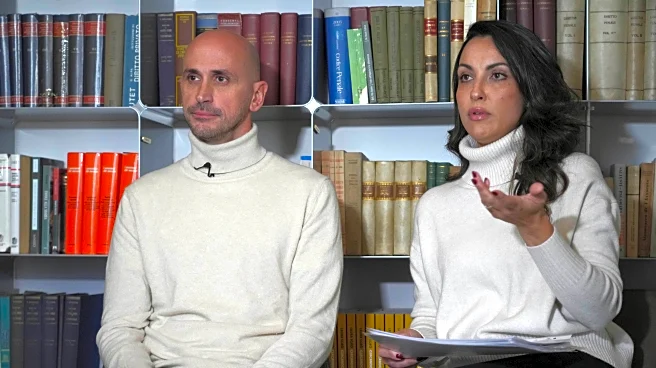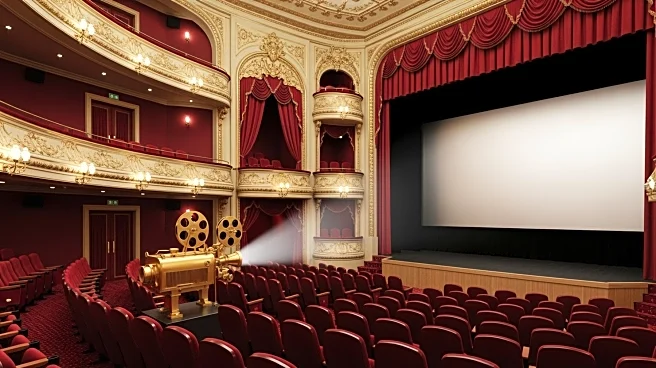What's Happening?
The Borso d'Este Bible, a 15th-century illuminated manuscript, is on display in Rome as part of the Vatican's Holy Year celebrations. Known for its opulent miniature paintings in gold and Afghan lapis
lazuli, the Bible is usually kept in a safe at a library in Modena. The Italian Culture Ministry considers it a masterpiece of miniature art, combining sacred value, historic relevance, and refined aesthetics. The Bible will remain on display in the Italian Senate until January 16, allowing visitors to view it digitally via touch screen displays.
Why It's Important?
The public display of the Borso d'Este Bible offers a rare opportunity to appreciate a significant cultural artifact that is typically inaccessible. Its exhibition in Rome highlights the importance of preserving and showcasing historical manuscripts, drawing attention to the rich tradition of illuminated art. The Bible's intricate artistry and religious significance contribute to the cultural and spiritual dimensions of the Vatican's Holy Year celebrations, attracting visitors and scholars interested in Renaissance art and religious history.
What's Next?
The Bible's display in Rome may inspire further interest in illuminated manuscripts and Renaissance art, potentially leading to more exhibitions and scholarly research. As visitors engage with the digital displays, the experience may encourage broader discussions about the preservation and accessibility of cultural heritage in the digital age. The Bible's exhibition could also prompt reflections on the role of art in religious and cultural celebrations.
Beyond the Headlines
The Borso d'Este Bible's exhibition raises questions about the intersection of art, religion, and cultural heritage. Its display as part of the Vatican's Holy Year celebrations underscores the significance of art in spiritual and cultural contexts, inviting contemplation of the relationship between artistic expression and religious devotion. The Bible's opulence and historical relevance highlight the enduring impact of Renaissance art on contemporary cultural appreciation.












